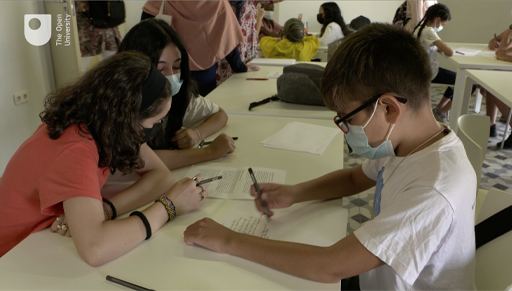Session 1: Engage – exploring religious diversity
Introduction
In this first session of the course, you will:
- reflect on the challenges and opportunities presented by religious diversity in present-day Europe
- gain insights into the attitudes of young people to religion, toleration and history
- be introduced to the RETOPEA clippings collection
- learn how to help young people engage effectively with this material.
Now watch Video 1, which introduces the material for this ‘Engage’ section. It shows learners in three different settings: London (UK), Leuven (Belgium) and Granada (Spain). As you watch think about how these learners engage with the historical sources they are given. Use the note-taking box to record your ideas. (Please note this is one of the films you can show to your group during the ‘Engage’ phase of your own workshop.)

Transcript: Video 1
[MUSIC PLAYING]
In Video 1, how do the learners engage with the historical sources they are given?
Discussion
This video shows young people engaging positively with history in a variety of ways by reflecting, note-taking, debating ideas, retelling stories, exploring their own city and identifying parallels with their own lives. The interviewees discuss potential misconceptions such as ‘presentism’, seeing the past through the narrow lens of the present.
